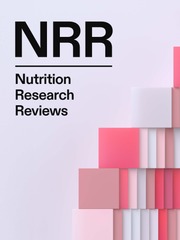No CrossRef data available.
Article contents
Iron status and risk of iron disorders in neonates: A narrative review of recent studies in animal models
Published online by Cambridge University Press: 24 February 2025
Abstract
The iron regulation mechanisms are not exactly the same between adulthood and the early postnatal period. Also, neonatal iron status is different in full-term versus preterm infants because the prenatal/gestational period, when hepatic iron accumulates, is shortened. Newborns, especially premature infants, are at high risk of iron deficiency due to inadequate iron stores, which constitute the primary source of iron to satisfy the neonate’s increasing iron requirements. In addition, frequent blood transfusions and congenital haemochromatosis may induce iron overload in the affected neonate. To understand the cause of neonatal iron deficiency/overload and to promote the development of effective therapeutic interventions in humans, different animal models have been generated by genetic engineering, low-/high-iron diets, phlebotomy/transfusion and surgical manipulation. These models use various laboratory and domestic animals to study iron imbalance. They serve as surrogate models for experiments that are ethically or practically unfeasible to conduct on human neonates. Although an animal model for studying neonatal iron disorders may not fully replicate the complexities of human diseases, it is designed to model specific aspects of these conditions. Combined data from multiple models can help to offset the limitations inherent in each individual model. In this review, we outline approaches to induce neonatal iron disorders, current animal models of full-term and preterm neonates, and recommendations for diagnosis.
- Type
- Review Article
- Information
- Copyright
- © The Author(s), 2025. Published by Cambridge University Press on behalf of The Nutrition Society



